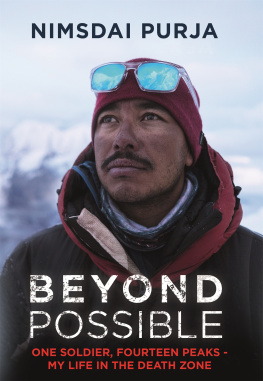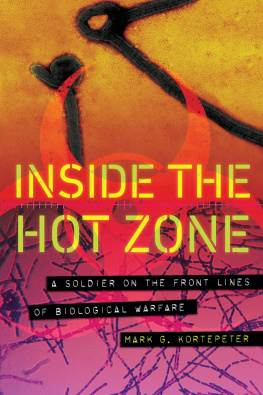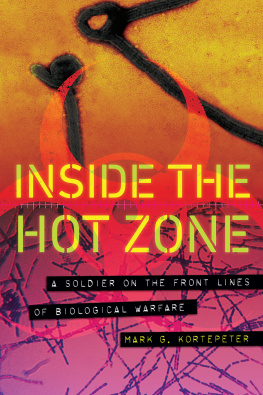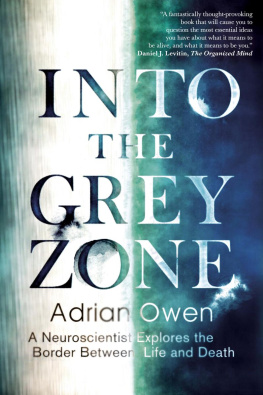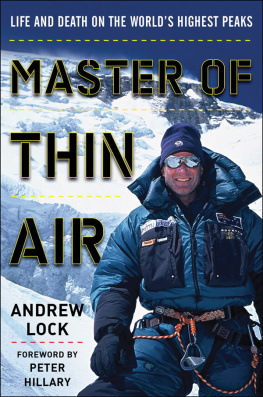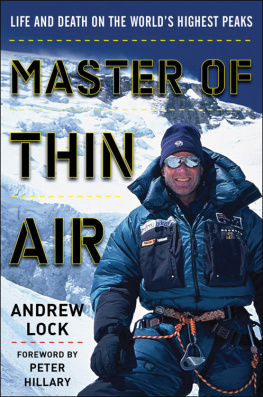Nims Purja - Beyond Possible: One Soldier, Fourteen Peaks — My Life In The Death Zone
Here you can read online Nims Purja - Beyond Possible: One Soldier, Fourteen Peaks — My Life In The Death Zone full text of the book (entire story) in english for free. Download pdf and epub, get meaning, cover and reviews about this ebook. year: 2020, publisher: Hodder & Stoughton Ltd, genre: Home and family. Description of the work, (preface) as well as reviews are available. Best literature library LitArk.com created for fans of good reading and offers a wide selection of genres:
Romance novel
Science fiction
Adventure
Detective
Science
History
Home and family
Prose
Art
Politics
Computer
Non-fiction
Religion
Business
Children
Humor
Choose a favorite category and find really read worthwhile books. Enjoy immersion in the world of imagination, feel the emotions of the characters or learn something new for yourself, make an fascinating discovery.
- Book:Beyond Possible: One Soldier, Fourteen Peaks — My Life In The Death Zone
- Author:
- Publisher:Hodder & Stoughton Ltd
- Genre:
- Year:2020
- Rating:5 / 5
- Favourites:Add to favourites
- Your mark:
- 100
- 1
- 2
- 3
- 4
- 5
Beyond Possible: One Soldier, Fourteen Peaks — My Life In The Death Zone: summary, description and annotation
We offer to read an annotation, description, summary or preface (depends on what the author of the book "Beyond Possible: One Soldier, Fourteen Peaks — My Life In The Death Zone" wrote himself). If you haven't found the necessary information about the book — write in the comments, we will try to find it.
Nims Purja: author's other books
Who wrote Beyond Possible: One Soldier, Fourteen Peaks — My Life In The Death Zone? Find out the surname, the name of the author of the book and a list of all author's works by series.
Beyond Possible: One Soldier, Fourteen Peaks — My Life In The Death Zone — read online for free the complete book (whole text) full work
Below is the text of the book, divided by pages. System saving the place of the last page read, allows you to conveniently read the book "Beyond Possible: One Soldier, Fourteen Peaks — My Life In The Death Zone" online for free, without having to search again every time where you left off. Put a bookmark, and you can go to the page where you finished reading at any time.
Font size:
Interval:
Bookmark:
The Peoples Project
As I worked my way back from Broad Peak to home in Nepal, the obstacles in my path seemed to grow in size and stature, and I decided to knock them down one by one. My most pressing issue was Shishapangma. The paperwork required to climb it was still being held back by the Chinese and Tibetan authorities, which left the mission schedule in chaos. Finding a solution required me to hustle, but despite my reluctance to admit defeat, it was also time to consider a Plan B, some fall-back option that might replicate the effort and endeavour required to see out a fourteenth peak.
Considering the scale of what was being attempted, I thought about climbing one of the other 8,000-ers again maybe Everest, Annapurna or K2. In the end, I decided that if the worst came to the worst, I should repeat Dhaulagiri. The climb was gnarly; it had also been my first 8,000-metre expedition, and I also pencilled in Everest as a bonus mission. Fifteen Death Zone peaks in seven months wasnt quite the original objective, but it might help to silence any trolls throwing shade on my achievements in the weeks and months to come.
More world records had been broken: Id finished the Pakistan 8,000-ers in 23 days; the worlds five tallest mountains (Everest, K2, Kanchenjunga, Lhotse, Makalu) had been climbed in seventy days (when I initially planned to do it in eighty); but I understood that failure to complete the ultimate mission would result in some level of pushback.
My other plan for climbing Shishapangma was to find an alternative route into Tibet. If sneaking across the border via some backdoor route were viable, it might be possible to scale Shishapangma without alerting the authorities. I checked the map. Accessing Shishapangma by trekking from the Nepali side into Tibet was certainly an option, but the plan was loaded with risk.
Firstly, the authorities were sure to be trailing my activities on social media. Also, my project had become a highly publicised endeavour where everyone was acutely aware of the limited timeframe available to me. Border patrol soldiers would be ready for my arrival and I wasnt so keen on being taken down, nor did I fancy causing a diplomatic incident. A captured, ex-Special Forces operator was likely to receive some interesting questions having trespassed into Chinese territory. Meanwhile, the risk to my teammates would be just as high; I didnt want their safety jeopardised for my cause. Inserting into Shishapangma was a job I needed to do alone.
In the end, I temporarily shelved the idea. My best hope was to find some way of convincing the Chinese and Tibetan authorities to reverse their decision. If I could apply a little political pressure, there was a chance I might score a permit, but I knew it was pointless to use the UKs diplomatic channels the relationship between both nations was, at best, frosty. I was better off approaching the authorities via a Nepalese conduit; Nepal bordered on China and the two countries enjoyed a friendlier understanding.
Besides, my mission wasnt about representing one nation, or a single entity. I hadnt been climbing the 8,000-ers to boost the achievements of Great Britain or Nepal. Nor was I trying to enhance the profile of the UK Special Forces or the Gurkha regiment. (Though there was undeniably a knock-on effect to be had.) My goals went way beyond culture or caste, regiment or country. I was representing the efforts of the human race.
I called friends in Nepal and pulled strings; I contacted everyone I knew with the influence to arrange a meeting between any individuals with the power to help. To my relief, appointments were made with a number of government ministers, including the Home Secretary, the Minister for Tourism, the Tourism Board, the Nepalese Mountaineering Association and the Ministry of Defence, until, eventually, I was granted an audience with the former Nepalese prime minister, Madhav Kumar Nepal a politician with considerable links to the Chinese government. This was my chance.
When I was ushered into his office, I didnt feel phased or overawed by his stature. My previous career had taught me about the protocols of meeting people in authority; I understood the finer details of respect, the importance of civility and cultural integration. I also appreciated the value of peoples time. Mr Kumar was a busy man and there was a limited window in which to present my motivations for completing the project. I sensed he didnt have much room for small talk or niceties but then neither did I.
I briefly summarised my motives behind the fourteen expeditions, first telling Mr Kumar about my work in enhancing the reputation of the Nepalese climbing community.
Ive wanted to put them back on the map, I said.
Then I explained my attempts to raise awareness of some of the environmental issues affecting the 8,000-metre peaks.
Isnt this an expedition the Nepali people can unite behind?
Mr Kumar nodded silently. Was this going well, or badly? I couldnt tell.
But I also want this to be an inspiring story for generations of people, no matter where they come from. This endeavour is for mankind. Thats why Im working so hard, every day, to push the story out. Mr Kumar, I want to prove the power of imagination. People have laughed at me, and made jokes, but Im still going strong. If I can get that Chinese permit, nothing will stop me from finishing what Ive started.
Mr Kumar was smiling now. Nims, let me make some phone calls, he said. I cant promise the Chinese will issue you with the paperwork, but Ill see what I can do.
We shook hands; I felt positive. I had a hunch that if a figure with the profile of a former Nepali prime minister was to back my cause, then the Tibetan and Chinese authorities might soften their attitude. I needed all the positive PR I could get. At that time, very few people outside of the mountain-climbing community, or my social media bubble, were paying too much attention to what Id achieved so far; in terms of newspapers and magazines, radio or TV shows, my efforts had passed by with very little fanfare, which was frustrating.
Its highly likely that if Id been a climber from America, Great Britain, or France, then every outlet in the world would have noticed the effort. I was also a realist. Those media companies with the biggest global outreach were mainly owned by Western investors. The story of a climber from Chitwan and his attempts to scale the worlds tallest mountains in record-breaking time didnt carry the same impact as a mountaineer working towards a similar goal from New York, Manchester, or Paris. Even though I was technically a British citizen, my nationality had positioned me under the radar of almost everyone.
On a lower level, though, the mission was still gathering momentum. My social media profile increased day by day, and more people were commenting on my photos and video clips, particularly once my dramatic picture of the Hillary Step went viral in May. (Though annoyingly, a lot of the media outlets that were ignoring my attempts to scale the fourteen 8,000-ers had conveniently forgotten to credit my work when using the photograph.)
Having left the military with nothing in the way of public relations experience, Id somehow developed a knack for gathering hundreds of thousands of followers, which was mind-blowing on a personal level, but wasnt enough to translate into huge expedition funds. The messages I received were still inspirational: kids mailed me to say theyd written a story on the successful expeditions so far and drew pictures of my team in action. Others commented on my photos, or promised to organise an environmental awareness programme at school. One or two more donations had trickled in, too.
My project was fast becoming the peoples project.
* * *
Time was on my side at least. I had all of August in which to fund the final phase and I managed to secure a branding deal with Osprey, a company that specialises in mountain-climbing and hiking equipment, and the IT company Silxo. Between them, they were able to cover nearly 75 per cent of Phase Threes logistical costs, and a little extra money was raised by a visit to the Nepali Mela UK, during an awareness drive for my work. This was a big deal. A mela was a festival attended by the Nepalese community living in the UK, and the 2019 event was being held at Kempton Park in August.
Next pageFont size:
Interval:
Bookmark:
Similar books «Beyond Possible: One Soldier, Fourteen Peaks — My Life In The Death Zone»
Look at similar books to Beyond Possible: One Soldier, Fourteen Peaks — My Life In The Death Zone. We have selected literature similar in name and meaning in the hope of providing readers with more options to find new, interesting, not yet read works.
Discussion, reviews of the book Beyond Possible: One Soldier, Fourteen Peaks — My Life In The Death Zone and just readers' own opinions. Leave your comments, write what you think about the work, its meaning or the main characters. Specify what exactly you liked and what you didn't like, and why you think so.

